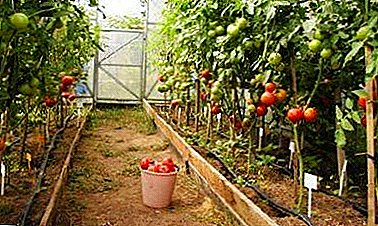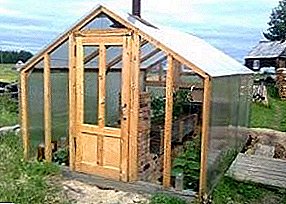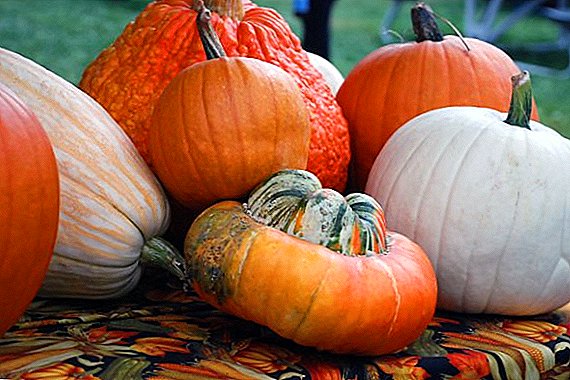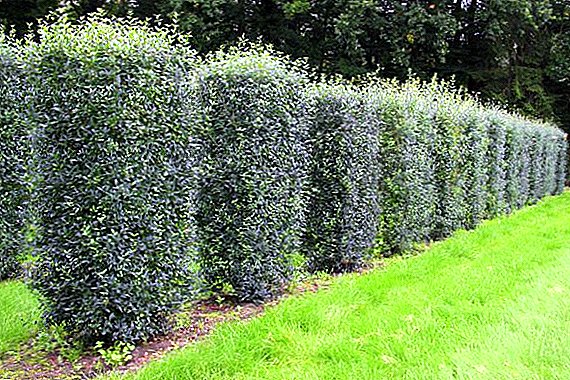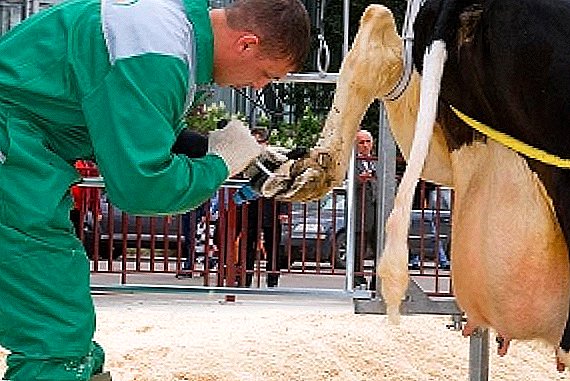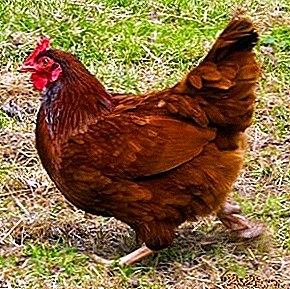 Each summer resident dreams to see in his garden beautiful royal flowers, or, as they are styled in everyday life, - roses. These are non-capricious, dry-resistant crops that will decorate any landscape. If a gardener has several wild rose bushes on a plot, then if he wants, he will surely succeed in turning them into a wonderful decoration for his garden.
Each summer resident dreams to see in his garden beautiful royal flowers, or, as they are styled in everyday life, - roses. These are non-capricious, dry-resistant crops that will decorate any landscape. If a gardener has several wild rose bushes on a plot, then if he wants, he will surely succeed in turning them into a wonderful decoration for his garden.
Did you know? The fruits of wild rose - wild rose, contain much more vitamin C than lemons.Analyzing the question of how to plant a rose to a dog rose, one should refer to the special step-by-step instruction, which is entirely contained in this article.
Grafting Roses: A Bit of Theory
Grafting is a great way to get varietal gorgeous roses in a very fast amount of time and with minimal cost. 
Technical terms
To quickly grasp the essence of the matter and understand how to properly plant a rose on a wild rose, you first need to understand some technical terms.
Budding - this is the grafting of plants, this is the way in which a specially grown stock (in our case - dogrose) inoculate a rose bud, peephole.
Did you know? Seeds of roses almost do not propagate, as it, as a rule, does not preserve "heredity."The compatibility of the rootstock and the scion is extremely important for the future of the royal flower, its viability, stability and durability will directly depend on it. With good compatibility, plants grow well together, develop well and mutually stimulate growth.
Why roses are born in the dog rose
It often happens that a stubbornly grown rosebush begins to reincarnate as a dog rose. The main thing is to catch the moment of “savagery” in time and to do everything possible for the rebirth of a wonderful flower.
When a rose blooms, it is impossible to confuse it with a dog rose, it has an original large flower with a large number of petals, and the flowers of a dog rose are famous for white, cyclamen shades and form rounded edible fruits.
If you plant calendula and marigold next to a rose, this will help to significantly reduce the number of such pests as beetles, ticks and nematodes.
 The main reasons for turning into a dog rose are non-compliance by the gardener with the technology of cultivation and improper pruning of the flower, as well as incorrect burial when planting in a permanent place.
The main reasons for turning into a dog rose are non-compliance by the gardener with the technology of cultivation and improper pruning of the flower, as well as incorrect burial when planting in a permanent place.Important! Unlike plants grown on rootstocks, own-rooted roses never degenerate.Therefore, it is necessary to carefully and seriously treat the first slightest signs of savagery, to correct the mistakes made as much as possible and to provide competent care for the culture.
Instructions for budding
In order to proceed directly to the most important part of the article, namely, the instructions for budding, it is initially important to consider some important requirements. 
How to choose the right stock
The rootstock for grafting should be chosen with high winter resistance, as well as with resistance to various diseases and fungi.
Important! The best example of a good stock is the dog rose (R.kanina), it is hardy enough and has few thorns on it, with which it is rather difficult to work because of the increased trauma.The roots of the hips, used for budding, are usually selected with a thickness of more than 7 mm, at least one year old.
Preparing kidney roses
If we consider the summer version of crossing, then cultural cuttings (grafts) are harvested immediately before selection.
For spring grafting, when the buds have not yet dissolved, the cuttings are prepared from late autumn or from the beginning of winter, and they are usually kept in a refrigerator or basement, wrapped in film at a temperature of +1 to -4 ° C.
Geranium, rue, thyme, tansy with their smell deter aphid - one of the annoying pests of roses.

Process description
The crossing should be carried out with specially prepared tools for this, namely an abrasive knife (sharp and clean) and a tape about 30 cm long and no more than 1.5 cm wide.
- To prepare for the grafting process, they scoop the earth from the hips, wipe the neck (the point where the root connects to the stem) with a rag or napkin, and make a T-shaped incision on it.
- Then on the prepared handle you need to separate the flap and cut it shallowly, separating the bud with the petiole.
- On the dog rose, with the tip of the knife, unfold the edges of the incision made and, gently holding the petiole, insert the kidney into the incision.
- Now you need to firmly press the kidney to the wood and tight enough to tie up the vaccination site. Eye must be left free.
This way you can propagate English roses, bush roses, Floribund roses, Double Delight roses, ground cover roses, tea roses, Canadian roses, having studied in detail the mistakes when growing roses, the subtlety of preparing roses for winter, the features of rose fertilizer, what are the most dangerous and common diseases of roses As well as pests of roses, you can arrange a royal pink flower garden near the house.Spud grafted rosehip moist soil. The quality of the breeding carried out by crossing is usually checked after a couple of weeks. And if the bud is green, and the leaf petiole is no longer there, everything turned out as it should.
T-shaped budding and budding in the butt: the difference
As you know, there are two main methods of budding - T-shaped and in the "butt", and there is a difference between them. The method of carrying out the T-notch inoculation in this article is given above. But the budding in the "butt" is carried out in the case when the bark is badly lagging behind, and when it is difficult to make a T-shaped incision. 
Important! The very way of budgeting in the "butt" is much easier for the technique of execution. Vaccination can be carried out in a longer stretch, but at a temperature not lower than 15 °WITH.
Budding of standard roses
The standard rose has a luxurious lush crown, which rests on an elegant long stem (trunk). To meet the decorative beauty is impossible in the wild, it is grown exclusively by skilled gardeners.
Information on how to plant a rose on a dog-rose can now be found on many Internet sites, but this article contains the most accurate and verified information. The selection criteria for suitable rose hips for budding are basically the same as for other varieties:
- winter hardiness;
- natural compatibility with the "queen of the garden";
- the ability to give a straight and smooth stem;
- strong roots;
- high resistance to diseases and pests;
- strong and flexible shoots.
Important! It is much easier to plant on a stem than on a bush variety. This is due to the fact that the grafting site does not come into contact with the soil, because it is high above the ground, and accordingly, the cutting germinates better.For budding standard roses need two elements - long rose hips (shtamb) and 2-3 buds (with or without bark flap) from a cultivar. The stock (shtamb) before grafting is washed, wiped and a T-shaped incision is made on the bark from above. In the process of making an incision, the abutment knife should not be immediately removed, but the left and right edges of the bark should be slightly removed and the shield carefully inserted.
Important! If the flap does not fit completely into the cut, then its excess part must be cut out.After the eye is inserted, the bark should be pressed and wound with a plastic film about 20 cm long and 1 cm wide. This must be done for close contact between the trunk and shield. As in the case of bud budding, the stem rose takes root in 2-4 weeks, while the kidney should noticeably get fat, and the leaf with a light touch to fall off. If the kidney, on the contrary, turns black and dries, alas, the operation was unsuccessful. In this case, budding can be repeated.
Features spring vaccinations
Consider the main features of the spring vaccination. For budding in the spring, cuttings are harvested in the fall or at the beginning of winter so that they ripen well and do not get damaged by frost. The spring vaccine is good because it gives quick results, by the end of the season a pretty bush is already developing. This vaccination is also called "budding with a sprouting eye." It also gives you the opportunity to re-vaccinate last year's bad budding.
Carnations, short-growing bells, hosts, rookewee, stonegrass, stonecrop, styloid bryus, stylox phlox - will perfectly coexist with roses.
Features of the summer vaccination
Some features of the summer vaccination:
- summer propagation of roses by grafting is carried out from mid-July to mid-August;
- in order to carry out the budding in the summer period of time, it is necessary to acquire a stock in spring or autumn;
- before budding itself, it is necessary to water the stock regularly, this will serve to intensive movement of nutrient juices in the bark, the flexibility of the wood and its moistening, as well as facilitate the easy separation of the bark in the process.
Highlights in winter budding
Many experts recommend planting a rose in the winter. The best time for this is mid-December. Consider the main points when winter crossing:
- before the procedure, the cuttings and the stock must be heated well;
- then cuttings of cuttings should be made, two or three eyes should be left;
- after doing the budding (see above), the graft should be dipped in melted paraffin to the level of the film;
- bundle seedlings and store them in boxes;
Important! Saplings must be in an upright position, roots down.
- roots should be sprinkled with wet sawdust and kept for the first two weeks at + 12-15 ° С.


